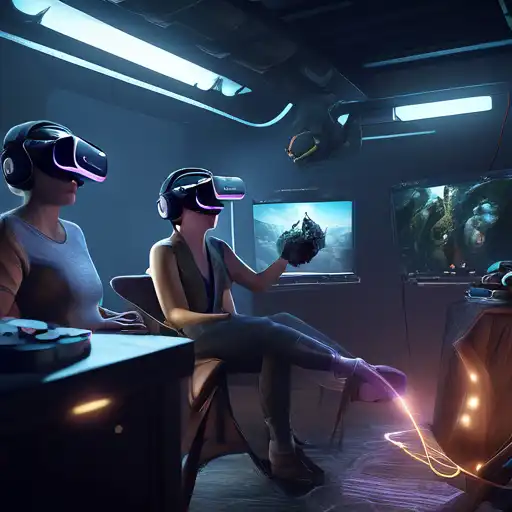Introduction to Virtual Reality
Virtual Reality (VR) has transformed the way we interact with digital content, offering unparalleled immersive experiences. From gaming to education, VR is reshaping industries by providing users with a sense of presence in a virtual world. This guide will walk you through the essentials of creating compelling VR experiences that captivate and engage.
Understanding VR Technology
Before diving into VR development, it's crucial to understand the technology behind it. VR relies on headsets that track the user's movements and adjust the virtual environment accordingly, creating a seamless experience. Key components include motion tracking, display resolution, and audio immersion, all of which contribute to the overall quality of the VR experience.
Designing for Immersion
Creating an immersive VR experience starts with thoughtful design. Consider the user's perspective and how they will interact with the virtual environment. Use spatial audio and realistic graphics to enhance the sense of presence. Remember, the goal is to make users forget they're in a virtual world.
- Focus on user comfort to prevent motion sickness.
- Incorporate interactive elements to engage users.
- Optimize performance to ensure smooth gameplay or navigation.
Development Tools and Platforms
Several tools and platforms can streamline the VR development process. Unity and Unreal Engine are popular choices for creating VR content, offering extensive libraries and community support. For those interested in web-based VR experiences, A-Frame provides a straightforward way to develop VR content that runs in browsers.
Testing and Optimization
Testing is a critical phase in VR development. Gather feedback from users to identify areas for improvement. Pay special attention to load times, frame rates, and interaction mechanics. Optimization ensures your VR experience is accessible to a wider audience, including those with less powerful hardware.
Future of VR
The future of VR is bright, with advancements in technology making immersive experiences more realistic and accessible. As VR headsets become more affordable and content more diverse, we can expect VR to become a staple in entertainment, education, and beyond.
Creating immersive VR experiences requires a blend of creativity, technical skill, and user-centric design. By following this guide, you're well on your way to mastering the art of virtual reality. For more insights into VR development, check out our guide on VR development tools.
